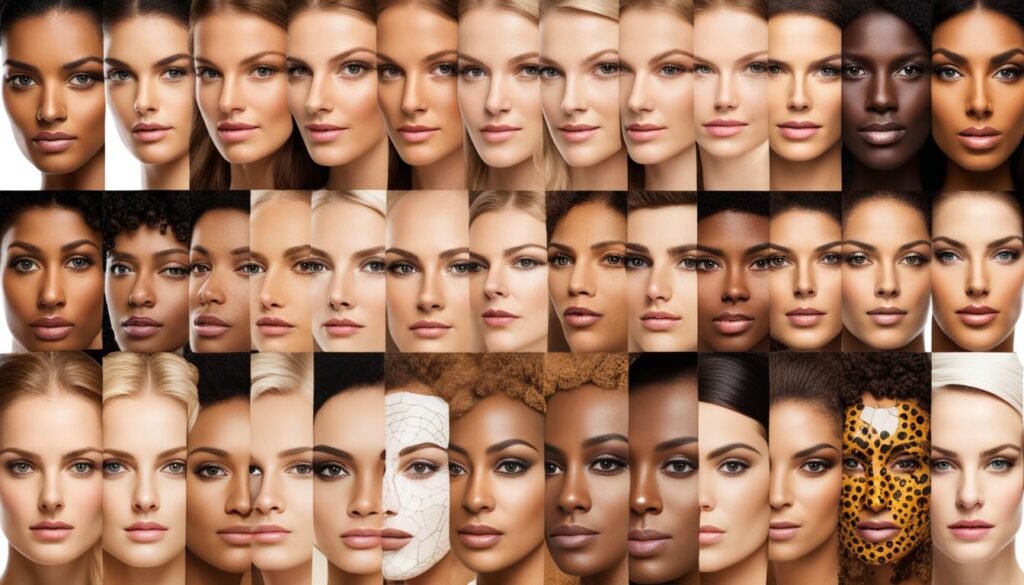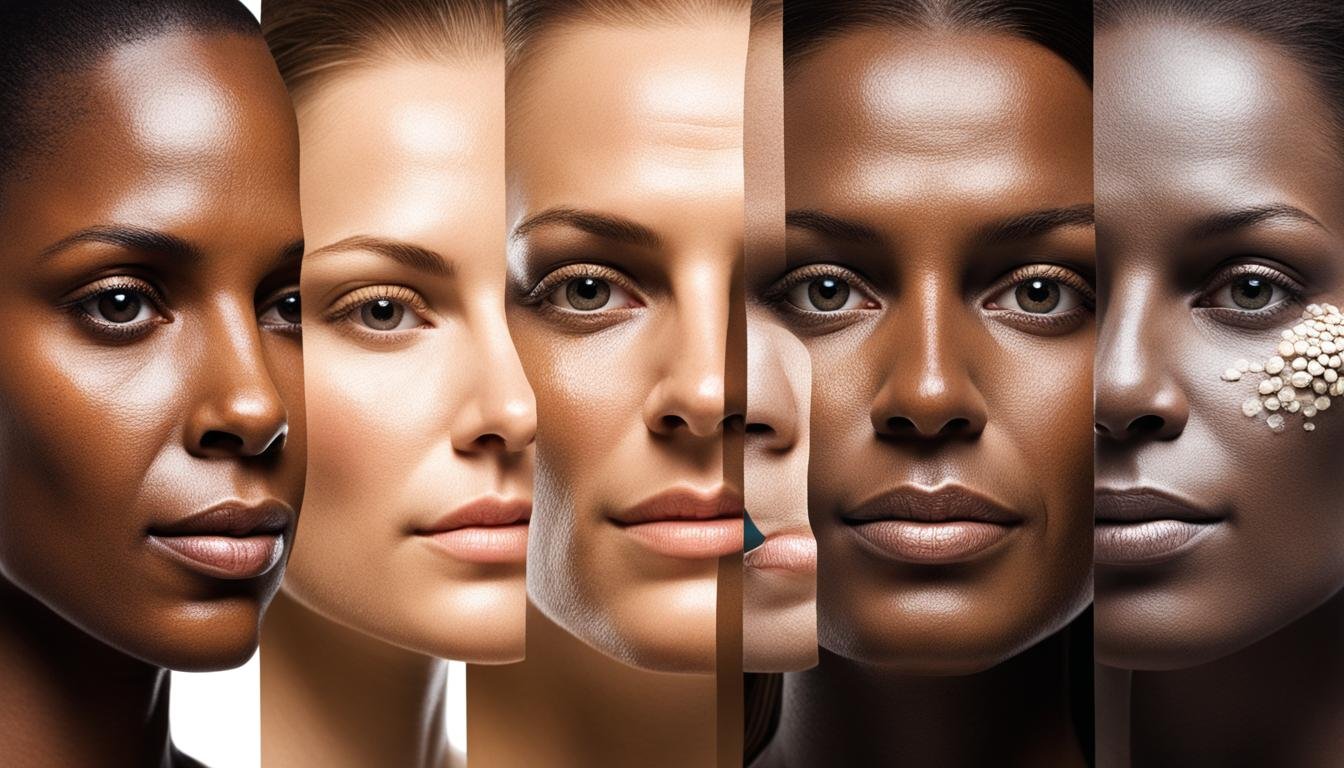How did black skin evolve?
Have you ever wondered why some people have black skin while others have lighter shades? The evolution of black skin is a mysterious and fascinating phenomenon that is deeply rooted in biology and genetics. From ancient times to the present day, human skin color has been shaped by genetic adaptations and the forces of natural selection. So, how did black skin evolve, and what does it tell us about human diversity?
In this article, we delve into the origins of black skin and the genetic adaptations that underlie its development. We explore how the early humans who migrated from equatorial rainforests to sunny savannas evolved dark skin pigmentation as a protective mechanism against folate depletion and DNA damage caused by ultraviolet radiation.
Understanding the evolution of black skin not only sheds light on the fascinating story of human diversity but also challenges common beliefs and preconceptions about race and skin color. Join us on this journey through time and genetics as we unravel the mysteries behind the evolution of black skin.
Key Takeaways:
- The evolution of black skin is a result of genetic adaptations and natural selection.
- Early humans developed dark skin pigmentation as a protection against folate depletion and DNA damage caused by ultraviolet radiation.
- Dark-skinned individuals have more melanin, which provides superior protection against UV radiation.
- Lighter pigmented skin evolved in regions with low sunlight to ensure sufficient vitamin D production.
- The global distribution of skin color is strongly correlated with the levels of ultraviolet radiation in different geographical regions.
The Role of Melanin in Skin Color
Melanin plays a critical role in determining skin color. The amount and type of melanin in our skin cells influence the pigmentation levels that give rise to different skin tones. Specifically, individuals with dark skin possess higher concentrations of melanin, particularly eumelanin, which provides robust protection against the harmful effects of ultraviolet (UV) radiation.
The production and storage of melanin occur within specialized structures called melanosomes, which are abundant in dark-skinned individuals. This surplus of melanosomes allows them to safeguard their folate reserves and defend against DNA damage caused by excessive exposure to UV radiation.
“Dark skin provides superior protection against the deleterious effects of ultraviolet radiation due to the higher amount of melanin.”
The primary source of vitamin D production in the body is sunlight, specifically the sun’s UV rays. In regions with tropical climates and intense sunlight, such as near the equator, dark skin offers sufficient protection against excessive levels of UV radiation. However, in areas with lower sunlight, lighter pigmented skin has evolved to ensure an adequate production of vitamin D, which is essential for various biological processes.
To summarize, the evolution of skin pigmentation is an adaptive response to different levels of UV radiation and the body’s need for vitamin D. Dark skin with higher melanin concentrations provides effective protection against UV radiation, while lighter pigmented skin allows for sufficient vitamin D synthesis in regions with lower sunlight levels.
Types of Melanin
| Melanin Type | Characteristics |
|---|---|
| Eumelanin | Dark brown to black pigment; offers superior UV protection |
| Pheomelanin | Reddish to yellow pigment; less effective at shielding against UV radiation |
Global Distribution of Skin Color
The global distribution of skin color is strongly influenced by the levels of ultraviolet radiation in regions where different populations reside. Dark-skinned populations, excluding indigenous Tasmanians, predominantly inhabit tropical areas near the equator with intense sunlight. The reason behind this distribution is the high levels of UV radiation in these regions. Dark skin provides these populations with superior protection against the harmful effects of the sun’s rays, such as sunburns and skin cancer.
In contrast, populations in regions with lower levels of UV radiation, such as higher latitudes, developed lighter pigmented skin over time. This adaptation facilitates the production of sufficient vitamin D in areas with limited sunlight. As a result, individuals with lighter skin tones are better equipped to synthesize vitamin D efficiently under these conditions.
However, it is essential to note that due to human migration and increased mobility, dark-skinned populations can now be found throughout the world, regardless of their proximity to the equator. This phenomenon highlights the complex interplay between migration, genetic adaptation, and environmental factors.
By examining the global distribution of skin color, we gain insights into the fascinating story of human migration, adaptation, and the impact of ultraviolet radiation on human physiology.

Conclusion
The evolution of black skin is a compelling example of how genetic adaptations and natural selection have played a vital role in shaping human diversity. Through the development of dark skin pigmentation, early humans were able to protect themselves from folate depletion and DNA damage caused by ultraviolet radiation. Melanin, the dark-brown pigment that acts as a natural sunscreen, played a crucial role in retaining folate reserves and safeguarding against the harmful effects of the sun.
As human populations migrated to regions with lower sunlight, the need for sufficient vitamin D production led to the evolution of lighter pigmented skin. This adaptation ensured that individuals could still generate enough vitamin D despite reduced ultraviolet radiation. Hence, the distribution of skin color across the globe closely matches the levels of ultraviolet radiation in different geographical regions.
By understanding the evolution of black skin, we gain insight into the complex and captivating story of human diversity. It underscores the power of genetic adaptations and natural selection in shaping not only our physical appearance but also our ability to thrive in various environments. The evolution of black skin stands as a testament to the ingenuity of the human body and reminds us of the remarkable qualities that make us the diverse and resilient species we are today.






